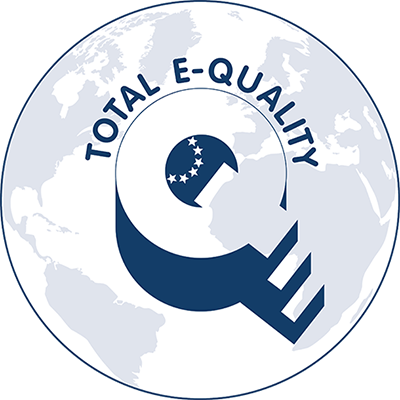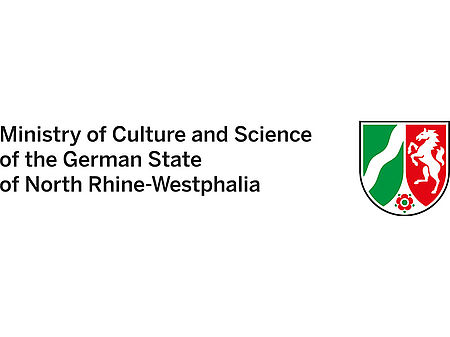What is open science?
Open science aims to encourage collaboration and the sharing of data at every stage of the research process: from the initial idea for a research project and the collection and analysis of data through to the publication and reuse of research results.
Openness and transparency can be increased at each stage of the research cycle:
Open sharing of ideas and open funding applications
Open science calls for free and open access to the generation of research ideas and the submission of funding applications. This means making all the relevant applications for research funding publicly accessible to ensure maximum transparency. Ideally, this openness also extends to the results of the peer-review process.
Research planning and study registration
In order to create clear distinctions between the processes of generating a hypothesis, collecting data and evaluating data, we recommend taking the following steps:
- pre-registering your research, i.e. specifying your research plan in advance and submitting it to a registry;
- using the Registered Reports concept, i.e. having your study peer-reviewed by a scholarly journal before collecting any data in order to assess the quality of the methodology.
These two steps help to make research more transparent and more credible, for example by ensuring that the hypothesis cannot be changed at a later point in time. Both procedures – particularly pre-registration – also serve as a means of documenting the research project and help to prevent research studies from being duplicated.
One of the key purposes of Registered Reports is to ensure the publication of all research findings, including those that do not confirm the researcher’s hypothesis. Publishing negative results helps to eliminate the bias towards publishing positive findings, also known as the “file drawer effect”.
The Center for Open Science website contains more information on how to put these steps into practice and explains what resources are available.
See also
Research data: what are the key issues to consider when publishing this kind of material?
Data production and (open) digital documentation of process steps
When it comes to producing data and documenting the steps involved in this process, researchers are increasingly turning to electronic lab notebooks (ELNs), which are digital alternatives to traditional paper notebooks. ELNs offer all the benefits of a digital environment, including timestamps and links, interfaces to other applications in the research data management environment, connections to other tools (e.g. analytical tools, search tools and filter functions), features for collaborative working, and reusable templates. They also offer a certain amount of protection against data loss, for example by eliminating the risk of illegible handwriting and the possibility of losing paper notebooks. Taking the open-science concept to its logical conclusion also means embracing the concept of an open lab notebook, in other words making all the research results publicly accessible in order to accelerate the research process and encourage collaboration.
ZB MED – Information Centre for Life Sciences offers a wealth of information on the topic of electronic lab notebooks, including a detailed ELN Guide: go to webpage
Data analysis and open-source research software
Many researchers write their own software programmes to analyse their data, especially in the life sciences. This makes the software itself into an important product of the research work and an essential tool for understanding the results. According to the principles of open science, this software should also be made publicly available for subsequent use or development by others under a corresponding licence agreement, or at least to allow peer reviewers and other academics to check and verify the results it yielded. Good documentation plays an essential role in making this possible.
If research software is acknowledged as an independent, self-contained product, then logic dictates that it should itself be developed in accordance with the principles of good research practice. What’s more, its development should take account of copyright issues (e.g. in regard to exploitation of the work) and proper citability. Experts are currently working on ways to make software citable, for example by assigning persistent identifiers and metadata descriptions. FAIR principles (see below) can also be applied to research software to improve usability and reusability.
Making research data available based on FAIR principles
The concept of open science calls for research data to be made available for reuse to the greatest extent possible. This can be enabled by adopting the FAIR principles, which encourage researchers to make their data findable, accessible, interoperable, and reusable. FAIR is a useful tool, though it does not necessarily guarantee that data will be made freely available; this is especially true in the case of sensitive material such as healthcare data. In such cases, the best principle is that data should be “as open as possible and as closed as necessary”.
According to experts, one of the greatest challenges in making FAIR research data available and enabling its reuse is the need for discipline-specific infrastructures. Germany is establishing a National Research Data Infrastructure (NFDI in its German abbreviation) for this purpose.
The re3data service can help users find suitable research data repositories for publishing their own data as well as identifying the best repositories in which to search for existing data.
The practice of publishing the results of scientific research in the form of data is becoming more and more accepted as a useful reputation-building strategy. Research data is increasingly regarded as a result of scientific research and as something that is citable. It can even be provided with persistent identifiers such as DOIs through services such as DataCite.
Making research data freely accessible not only improves its reusability, but also boosts the overall transparency of a research paper by enabling the data to be included in the peer-review process.
Increasingly, scholarly journals are asking researchers to include a ‘Data Availability Statement’ when submitting their work. This statement tells the reader where the research data associated with a paper is available and under what conditions it can be accessed.
See also
Research data: what are the key issues to consider when publishing this kind of material?
Please see the ZB MED webpage on research data management to find out more about making research data openly accessible: go to webpage
Quality assurance: from peer review to open peer review
Opening up the peer-review process is seen as one way to address the numerous weaknesses of the current process, such as peer reviews that are not fit for purpose.
The umbrella term “open peer review” covers many different gradations of openness. For example, it may mean publishing peer reviews and the names of peer reviewers as a general policy, or only doing so with the consent of the authors.
See also
Peer review: Why is it important?
Open access as a publishing model
Open access is a well-established means of making publications freely accessible, especially in the life sciences. It goes hand-in-hand with granting various rights of use to readers while protecting the rights of authors.
See also
What does the term 'open access' mean?
Related topics: open citation data, open educational resources, open innovation and citizen science
Although the research cycle comes to an end once research outputs are published, open science also encompasses a variety of other topics that either have a broader scope or are closely related to the research cycle.
- Open citation data: free and open access to citations in publications with the aim of developing freely accessible citation databases or citation analysis tools on this basis.
- Open educational resources (OER): applying the principles of open access and/or open science to teaching materials including, but not limited to, scientific publications and other materials in university teaching. The OER concept covers all forms of teaching resources, including examples such as information packs, worksheets, textbooks and entire video courses. As well as making it easier for learners to access study materials, OER also encourages teachers to share ideas with their peers and incorporate other teachers’ materials in their own lessons.
- Open innovation: embracing greater openness and cooperation in the development process and increasing potential by incorporating publicly accessible resources.
- Citizen science: public participation and collaboration in scientific research.
Open science policies
It is becoming increasingly common for academic institutions and research funding bodies to draw up their own open science policy. In doing so, they seek to clarify their definition of open science and to set out the open-science practices they expect their researchers and/or employees to apply on a day-to-day basis. Such policies generally include information on where to obtain support and who to contact to resolve any questions. Open science policies can be presented in the form of recommendations or binding guidelines. Researchers should therefore check with their own institution and funding bodies to determine whether there are any open science policies in place that might apply to their work.
Open science, good research practice and research evaluations
With its underlying principles of openness and transparency, open science is also seen as a tool for supporting good research practice. Discussions are currently underway on reforming research evaluations to place a greater focus on open-science practices.
See also
What does the term 'open access' mean?
Peer review: Why is it important?
Disclaimer
Important note: The information and links provided here do not represent any form of binding legal advice. They are solely intended to provide an initial basis to help get you on the right track. ZB MED – Information Centre for Life Sciences has carefully checked the information included in the list of FAQs. However, we are unable to accept any liability whatsoever for any errors it may contain. Unless indicated otherwise, any statements concerning individual statutory norms or regulations refer to German law (FAQ updated 11/2022).
Contact

Dr. Jasmin Schmitz
Phone: +49 (0)221 999 892 665
Send mail
References
Schapira, M., & Harding, R. J. (2019). Open laboratory notebooks: good for science, good for society, good for scientists. F1000Research, 8(87).
Katerbow, M. & Feulner, G. (2018). Handreichung zum Umgang mit Forschungssoftware. Allianz der deutschen Wissenschaftsorganisationen. (German only)
Druskat, S. et al. (2022). Software publications with rich metadata: state of the art, automated workflows and HERMES concept [Preprint].
Hong, C. et al. (2022). FAIR Principles for Research Software (FAIR4RS Principles) (1.0). Zenodo.
Landi, A. et. al. (2020). The “A” of FAIR – As Open as Possible, as Closed as Necessary. Data Intelligence, 2(1-2), 47–55.
Ross-Hellauer, T. (2017). What is open peer review? A systematic review. F1000Research, 6(588).
Further information
Schmitz, J. (2020). Open science – an overview. GMS Med Bibl Inf, 20(3):Doc25.
Nationale Forschungsdateninfrastruktur (NFDI)
re3data
DataCite
Center for Open Science
Informationsstelle OER
Bürger schaffen Wissen
Ferguson, L. M. et al. (2021). Helmholtz Open Science Briefing: Gute (digitale) wissenschaftliche Praxis und Open Science: Support und Best Practices zur Umsetzung des DFG-Kodex „Leitlinien zur Sicherung guter wissenschaftlicher Praxis“ (Version 2.0). Potsdam, Helmholtz Open Science Office. (German only)
Open Science als Teil der Wissenschaftskultur. Positionierung der Deutschen Forschungsgemeinschaft of 11 October 2022, version 1, Deutsche Forschungsgemeinschaft. (German only)
Angelaki, M. (2021). Model Policy on Open Science for Research Performing Organisations (RPOs). Zenodo.
Agreement on Reforming Research Assessment of 20 June 2022. Science Europe. (accessed 31/01/2023)
Towards a reform of the research assessment system: scoping report of 26 November 2021. European Commission, Directorate-General for Research and Innovation.




